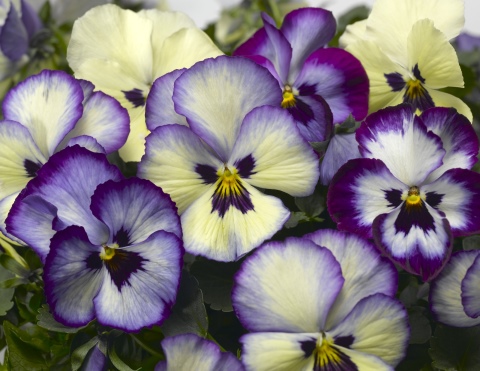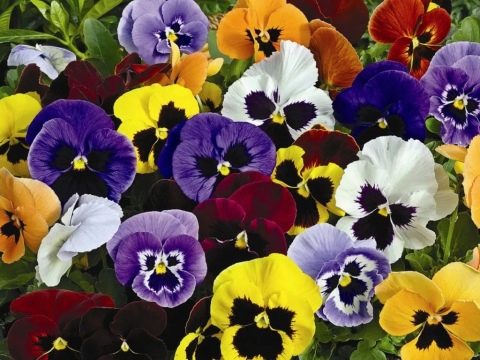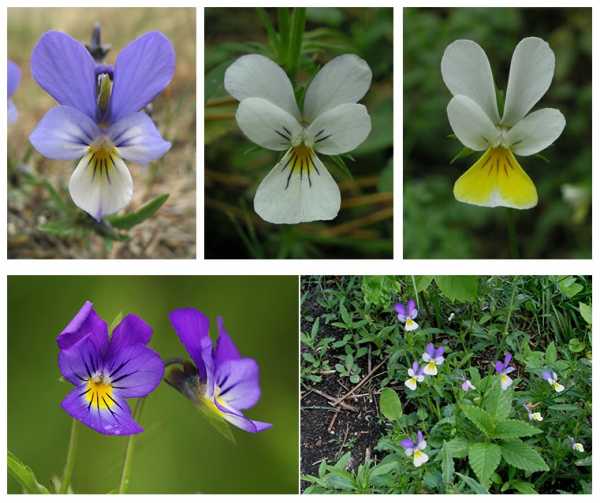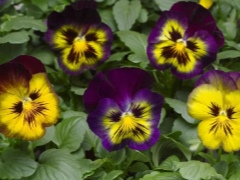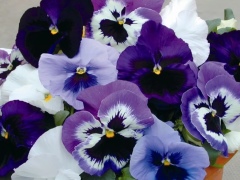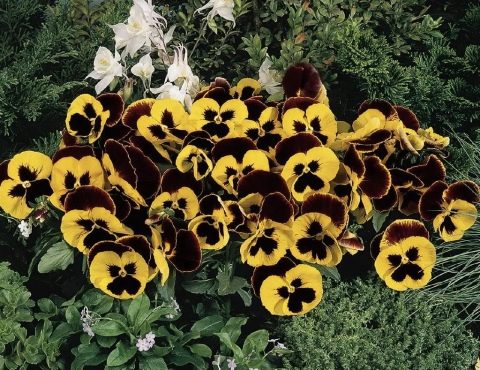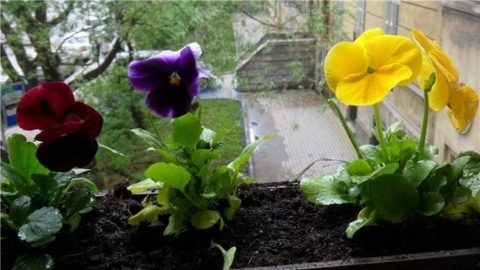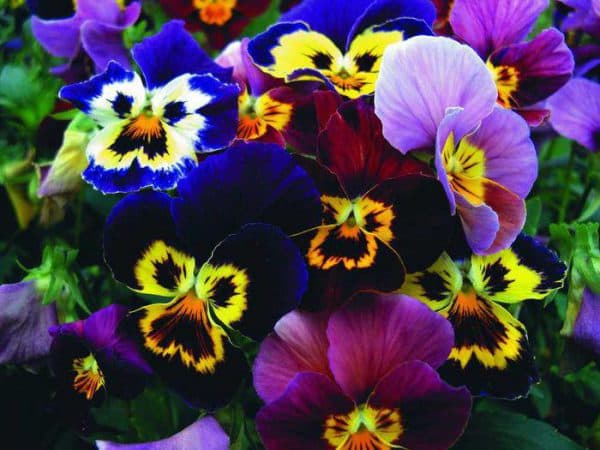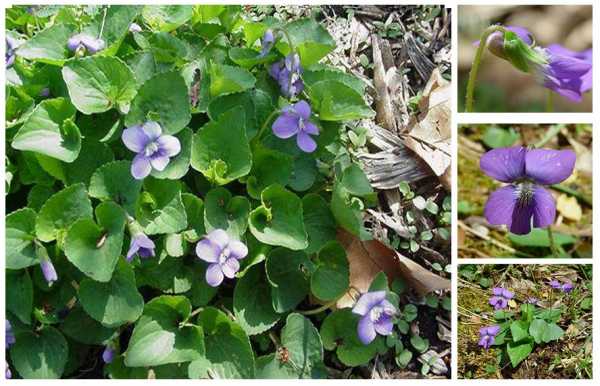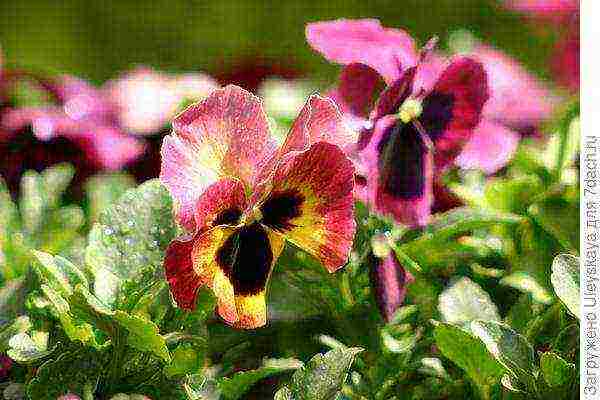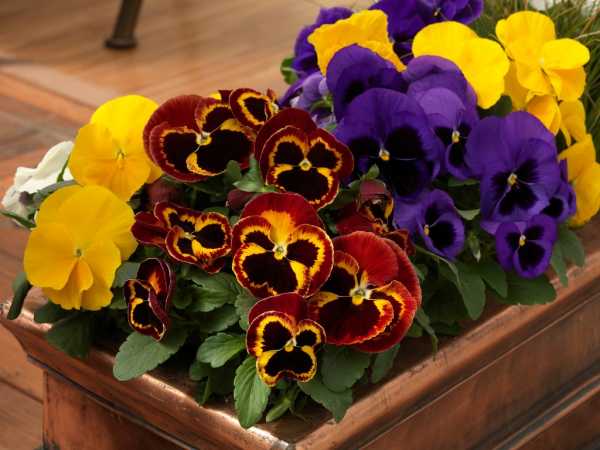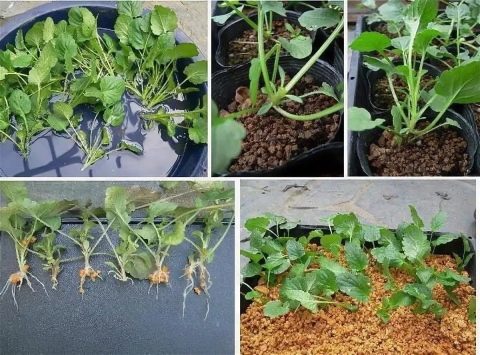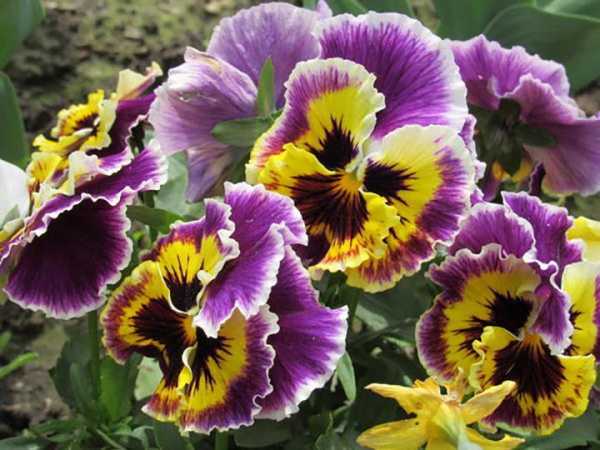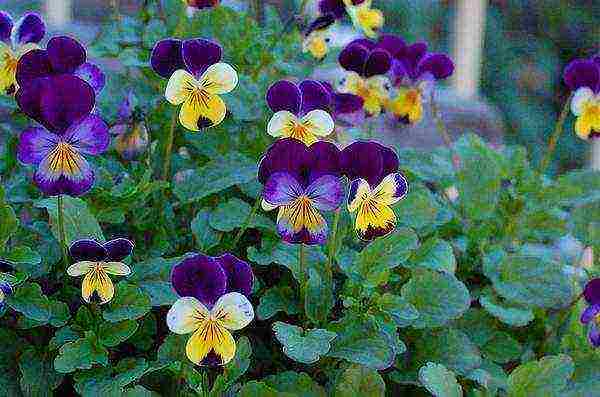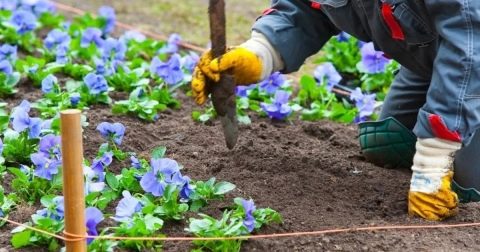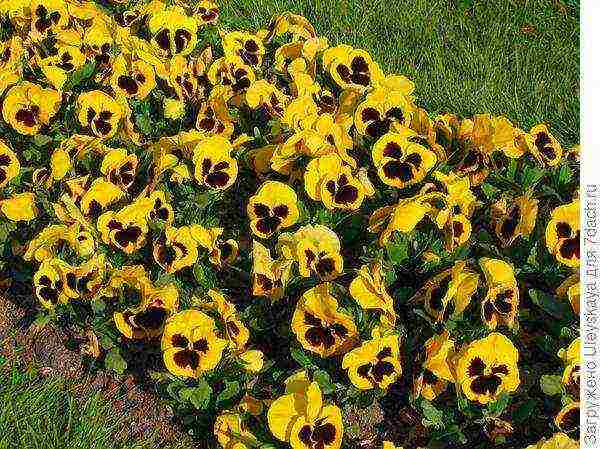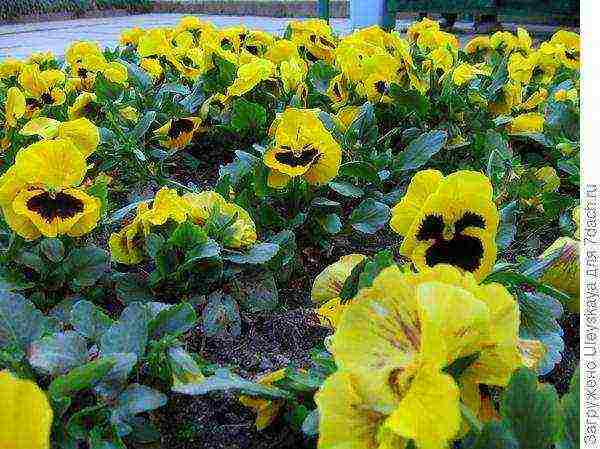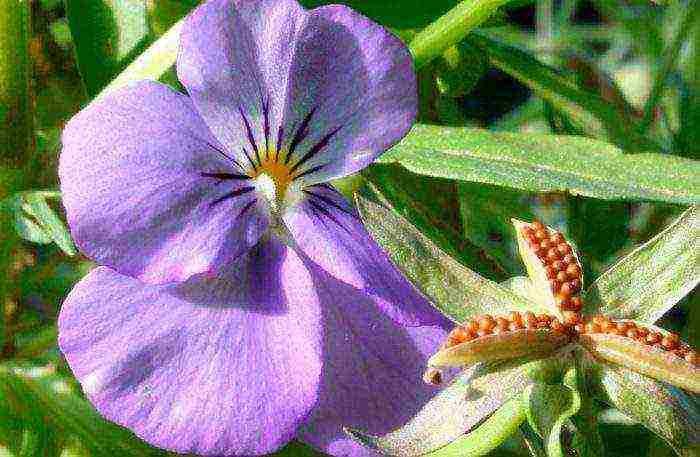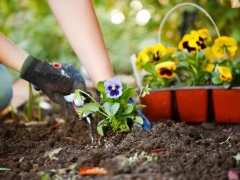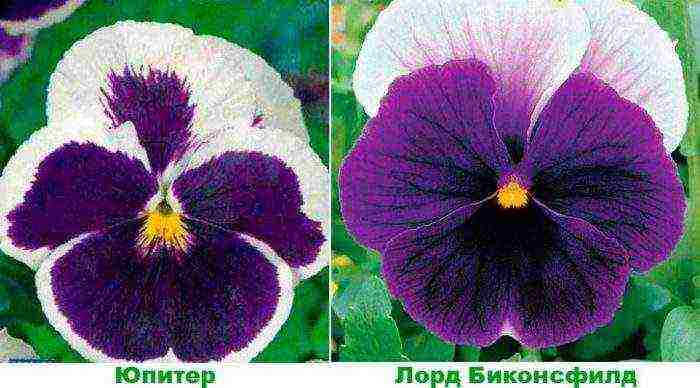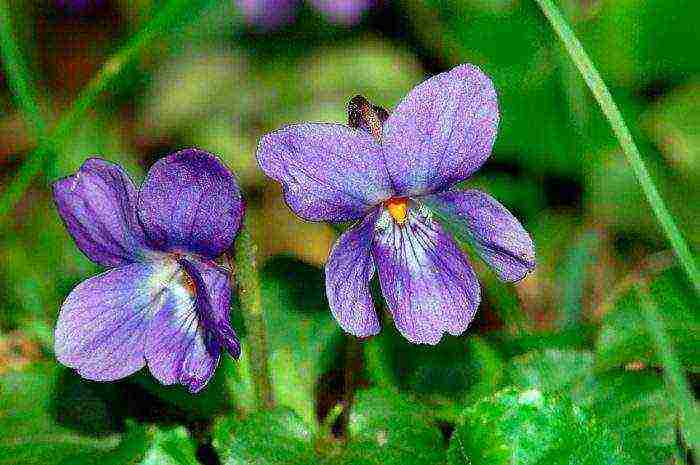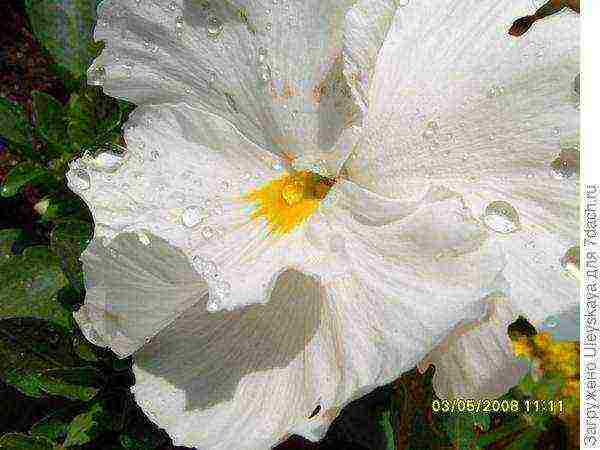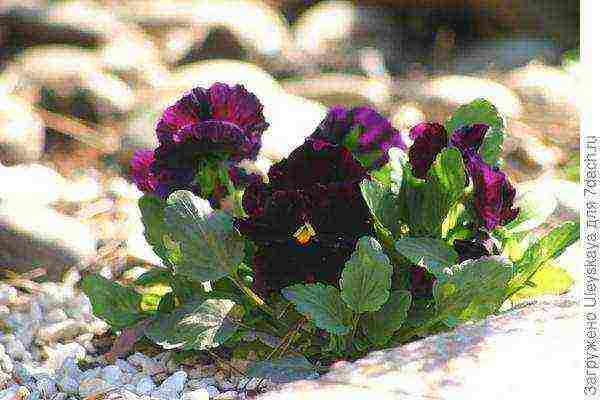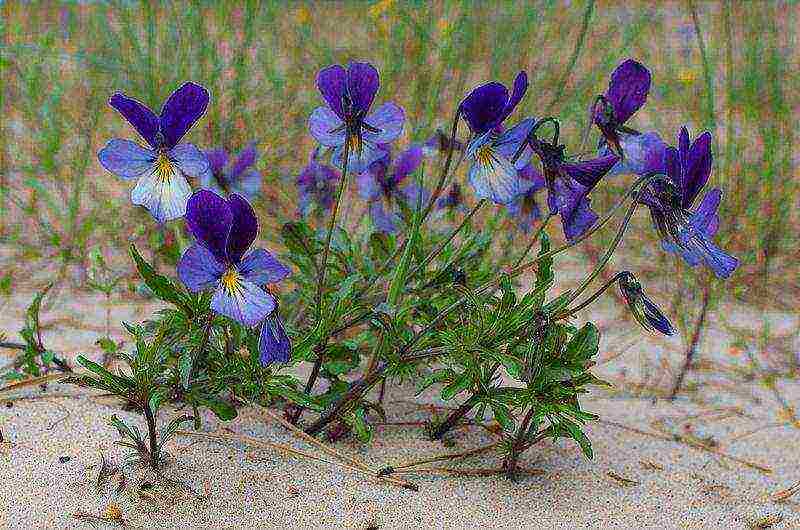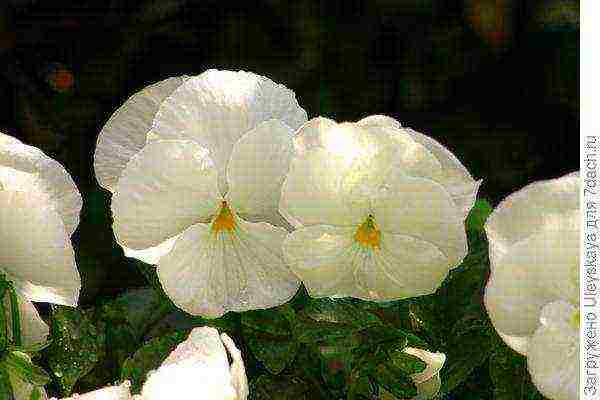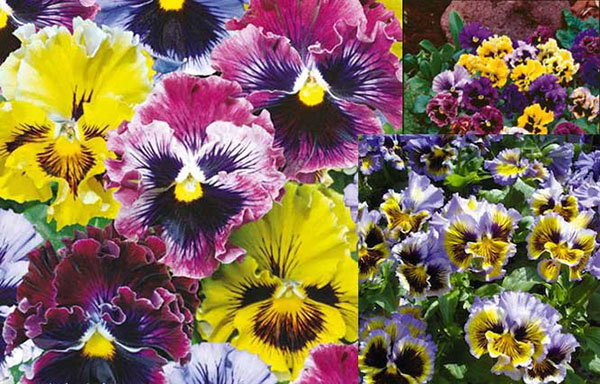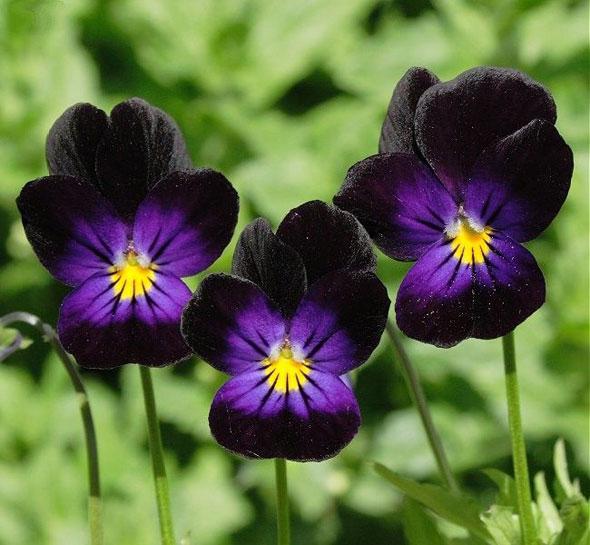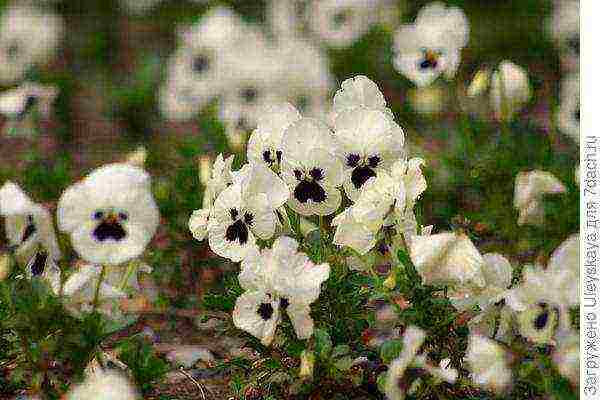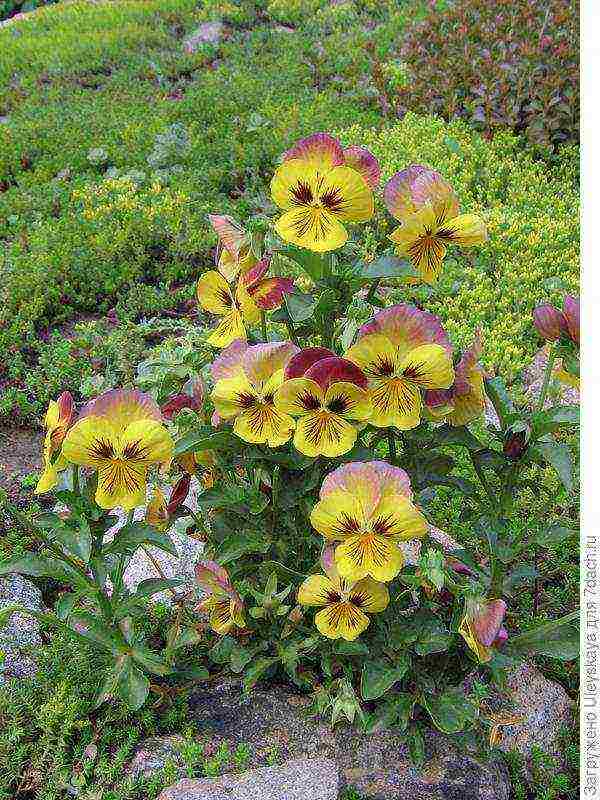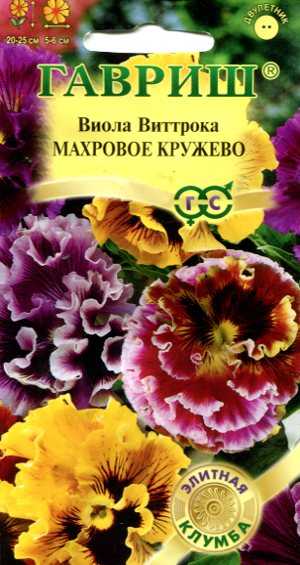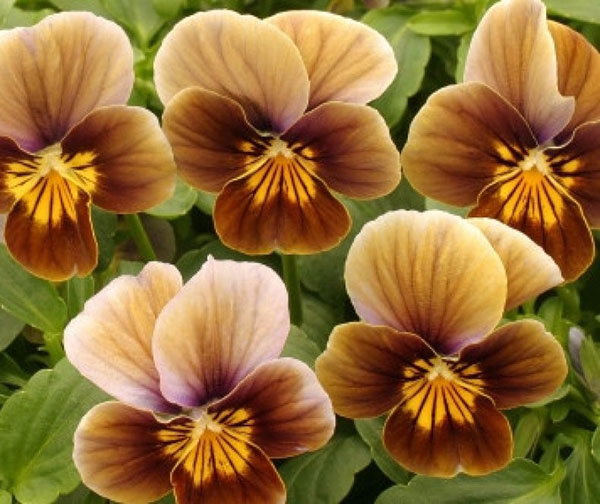Pansy flowers - description and varieties
Many are surprised to learn that pansies are perennial plants, we just grow them as a two-year culture. Cheerful eyes begin to appear in the spring and bloom somewhere in the middle of summer.
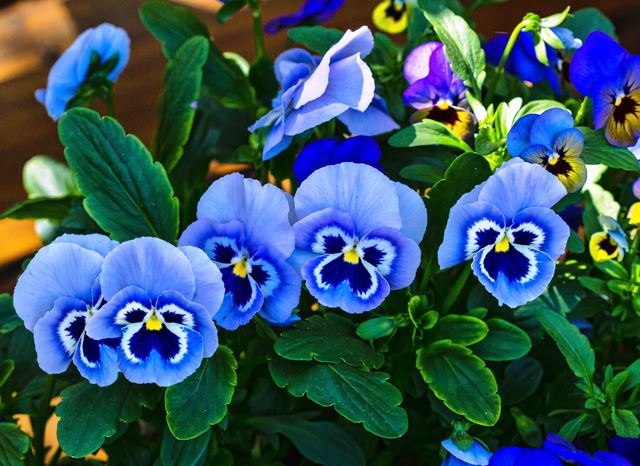
Compact bushes with lush green oblong-oval serrated leaves are decorated with flowers in spring, with a diameter of 5 to 10 cm, depending on the variety.
By size are divided into:
- Undersized
- Medium-sized
- Tall
By the structure of the flower there are:
- Simple
- Semi-double
- Terry
Flowers with wavy edges look very beautiful. Such varieties began to be bred relatively recently, they are distinguished by a wide variety of colors, with eyes, specks or stripes.
Very often, landscape designers prefer monochrome Violas. A sufficient variety of colors have already been bred:
- White
- Yellow
- Orange
- Blue
- Purple
They come as an addition to other flowers or in a prefabricated flower bed. You can also delimit the space in the garden with different colors. I always plant Pansies in large flowerpots and alternate monophonic with multi-colored ones. I also really liked the ampelous varieties that can be hung under the roof on the terrace and they hang with a large multi-colored hat.
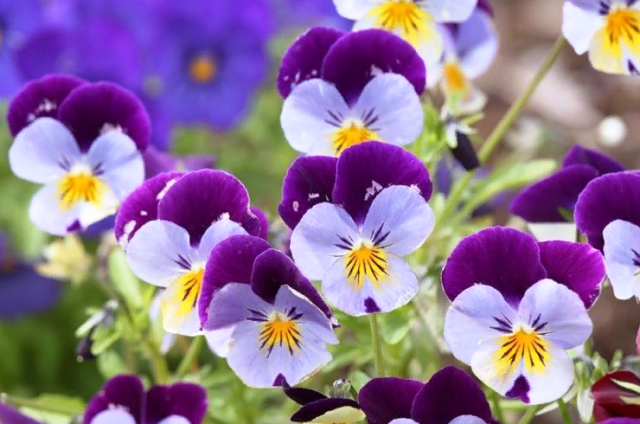
Many people like to plant pansies on their balconies, they are like a bright beacon, attract the eyes. In northern latitudes, it is advisable to plant winter-hardy varieties in open ground.
Different varieties have also been bred in terms of ripening, that is, you can pick up plants so that they bloom one after another. And thanks to breeders, we are able to grow violets with different sizes of flowers, from very tiny to gigantic.
Reproduction
Seed propagation in a warm room
If you want to get a blooming carpet of pansies in spring, you need to sow the seeds in late February or early March (central Russia). To get stronger seedlings, you can soak them in a solution of zircon or epin before planting seeds. These are biostimulants of growth and resistance to the negative effects of the external environment, including pests.
Viola seeds are small enough, so they are sown randomly. Further, the sown seeds are slightly pressed into the soil surface. On top it is necessary to pour a thin layer of crushed soil mixture (5 mm) and water gently without exposing the seeds. In order not to forget about the viola varieties planted, you can attach a label to the container.
Before the first shoots appear, the temperature in the room should be approximately +20 ° C. After germination of seedlings, the air temperature should already be lower (+ 13 ... + 17 ° С). Before picking seedlings, fertilizing is carried out with fertilizers containing potassium, nitrogen and phosphorus.
When 2 leaves appear on the sprouts, you can pick. For viola seedlings, cassettes are selected with a diameter of less than 70 mm. The air temperature for sprouts at this stage should be reduced to +12 ° C. It is better to plant ready-made seedlings when the outside air temperature does not drop below + 10 ° C and the soil warms up enough so that the plant does not experience stress and takes root well.

Seed propagation in the open field
Sowing viola seeds in open ground is carried out in July (middle zone of Russia). To do this, you can use your pansy seeds growing on the site. Collect only whitened boxes. They will be placed in a shallow container and covered loosely (for air access) with a lid, since when the capsules are opened, the seeds scatter.
The soil is prepared in the same way as described above for planting plants. Seeds are best planted in shallow (approx. 5 mm) grooves. You need to try to sow not too thickly for better seedling development. From above, the seeds are covered with a thin layer of crushed soil mixture and must be watered.

After a week, the first shoots will begin to appear. Seedlings are planted in a permanent place in the fall or spring. It depends on the readiness of the lawn. Viola bushes grown outdoors are much stronger, bloom faster and are distinguished by abundant flowering.
Reproduction of pansies by cuttings
Viola is propagated by cuttings in early summer. Already developed strong plants are suitable for this method. Shoots with 2-3 nodes are cut off and planted in a darkened area. When planting, the cuttings are placed close to each other to a depth of 5 mm. The soil should be moist and the plants should be sprayed immediately after planting. Further, such seedlings are covered with damp paper, which is periodically sprayed with water.
This type of reproduction of pansies involves daily spraying and periodic fertilization (1 time in 10 days). A month later, you can see the result, the cuttings have their own root system.
Botanical description
- Viola Wittroca belongs to violets. Can be cultivated as annual, biennial and perennial crops. It often reproduces by self-seeding.
- The flowering period is long. Continues until permanent snow cover falls.
- Easily tolerates a drop in temperature to minus 5 ° C, it can survive frosts on the soil in the spring and autumn without additional shelter.
- The root system is powerful, fibrous, loves transplanting, picking, transshipment. It does not need a large amount of land for cultivation in the summer.
- It is a plant with long daylight hours. This should be taken into account when sowing early. For supplementary lighting, you can use specialized photo lamps, for example, Sororia.
- The Andes and North America are considered the botanical ancestral home of violets, and plants are also common in Japan. Currently, there are more than 500 varieties of cultivated hybrids and varieties.
- The additional name of the culture is tricolor violet (the core of the bud is always different from the two flowers present on the buds).
In the wild, pansies are widespread throughout the Eurasian continent. It is they that are taken as a basis by breeders when breeding colorful and large-flowered buds.
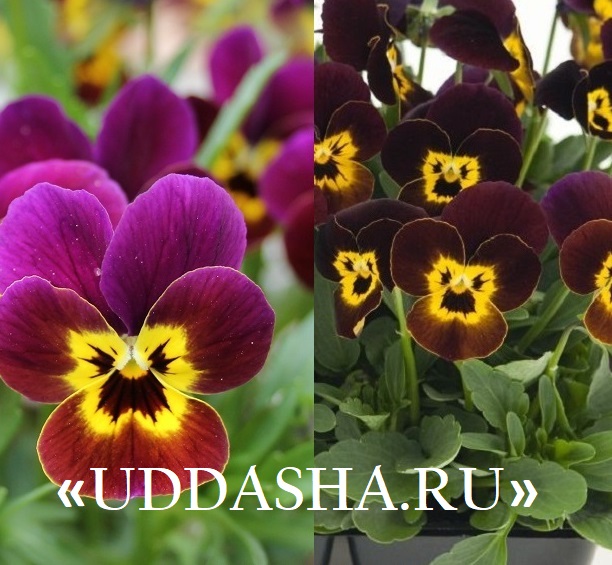

Reproduction
We have already discussed the features of viola seed reproduction above and will not repeat ourselves, we will only clarify that when planting in the ground, you should definitely follow the rules for zoning flowers of different varieties. Otherwise, cross-pollination occurs, and the next year the plants will look a little different - sometimes not at all the way their owners want.
Few people know that annual and perennial pansies can also be grown by cuttings. Usually, in the second season, the flowers become smaller and require renewal. To do this, the garden bed is thinned out, leaving only stems with unblown ovaries on each bush, and bushes cut at the end of May with a couple of internodes are transplanted into a universal soil. During this period, the plant requires abundant watering, preferably with the use of biostimulants - so the development of the root system will go faster
If the summer is dry, then cuttings are carried out under the film, since at this stage it is important to maintain constant moisture in the upper layer of the earth
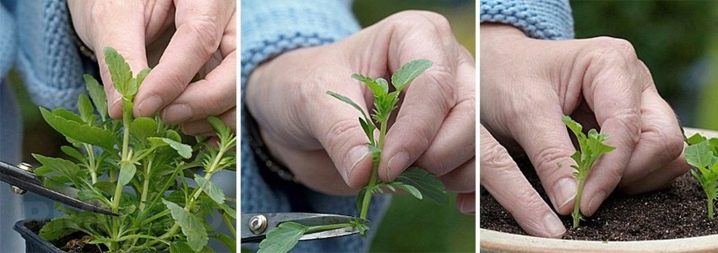
We grow viola at home
Raising these gentle creatures at home is not at all problematic: they have an agreeable and not capricious character. Usually seeds are used for propagation. To determine the time for sowing, it is worth deciding on your desire to see the first flowers. Experts advise growing viola as an annual or biennial, because it is then that it has the most attractive appearance and is distinguished by the splendor of flowering.
If you want flowering in the same year, sow in the last days of January or in February for seedlings. Planting seeds in the ground in June will help to achieve early spring flowering in the second year. If sown earlier - in May, then the bushes can outgrow and bloom in autumn, which will have a bad effect on spring flowering. That is, in the first case, you will get an annual plant, and in the second, a biennial plant.
How to grow viola seedlings
Not everyone can and knows how to grow pansies at home, and therefore they buy expensive seedlings in pots in the market or in stores. But why spend money if viola of any variety you like can be grown independently as an annual.
So:
- Used containers for seedlings are thoroughly washed, remove plaque on the walls and scald with boiling water and soda;
- The land is preferable light, but fertile. It is best to purchase soil from a store and mix it with sand and garden soil (1: 1: 2). Be sure to spill it with a fungicide for disinfection;
- As soon as the earth dries up, we make grooves no more than a centimeter deep, and do not lay out the seeds thickly, sprinkle them;
- We cover the container with glass, you can put on a plastic bag or wrap it with cling film. We keep in a warm dark place until shoots appear, ventilate regularly;
- When sprouts appear, on day 5-7, we take it out into the light and slightly open it, giving access to fresh air;
- Every week we feed the seedlings with a weak solution of any flower fertilizer. We periodically water the dried earth, but remember that when waterlogged, the viola is prone to a black leg;
- We carry out a pick with two real leaves, moving the seedlings into individual cups;
- At the end of April we harden the seedlings - "walk" on the street or balcony;
- After hardening, you can send seedlings to the flower bed at any time. The multicolored "eyes" perfectly tolerate the transplant even when they bloom. You can plant it in single bushes or at a distance of at least 30 cm from the bush.
Planting seeds in the ground
To achieve abundant and long flowering in the spring in the second year, you can sow seeds in the previous summer: the plant will have time to accumulate enough strength for this. By the way, quite often, violas are grown in both cases through seedlings, because then the risk that the seeds will dry out and not germinate is almost halved. However, if the soil in the flowerbed is loose, then you can sow without fear in June-July directly into the open ground:
- we make grooves of small depth (0.5 cm), spill and spread the seeds sparsely. We crush it on top with the earth, tamping it slightly with the palm of our hand. We maintain a distance of 10 cm between the grooves;
- it is better to shade the bed so that the soil does not dry out (you can build some kind of canopy or just stick branches with leaves next to it);
- after the growth of a pair of true leaves, the seedlings dive, not forgetting to reduce the central root by a third. Planting flowers in a permanent place is carried out according to the scheme 25 × 25 cm.
Remember that the plant should not bloom, so when buds appear, they need to be cut off.
Vegetative propagation

In addition to the seed method, pansies can be propagated by cuttings or layering
These methods are used to preserve the variety in the new plant.
Hybrid varieties, when planted with self-collected seeds, most often lose the qualities of the mother bush:
Cuttings should have at least two nodes. They are planted in a prepared substrate and shaded. Regular watering and spraying is carried out. You can plant them in greenhouses. They are transferred to a permanent place in open ground after the root system has formed.
For the season from one bush, you can get up to 40 pieces. cuttings. Florists, however, do not recommend cutting more than 10 pieces at a time. from one bush.
If cuttings are planted in May or June, then the young bush will begin to bloom in late summer or early autumn. If you plant them in the fall, the first flowers will appear in the spring.
It is best to carry out the procedure in the fall.During the winter, roots will form on the dug area. In spring, the rooted plant can be transplanted elsewhere.
The propagation of pansies by layering is suitable for hybrid varieties. He, like cuttings, retains varietal affiliation.
Vegetative propagation rejuvenates the plant. Despite the fact that most varieties of viola are perennial, by the third year of life they lose their decorative effect. Their bushes grow, flowers become smaller, and fewer buds are formed. The optimal period for the growth of the bush is 2 years.
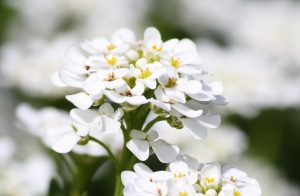
Alyssum: species and varieties of plants, sowing seeds in open ground and caring for a rainbow carpet on the site (130 Photos) + Reviews
Viola medicinal properties

Pansies have beneficial properties for the human body
Traditional medicine uses pansies to treat the following conditions:
- Arrhythmia
- Neuroses
- Depression
- Pneumonia
- Inflammation of the genitourinary system
- Skin diseases
- Measles
- Diseases of the joints
- Psoriasis
- Eczema
- Diseases of the gums and teeth
Broths are used as a diuretic, diaphoretic, hemostatic agent.
You can not use pansies for medicinal purposes for diseases such as:
- Hepatitis
- Glomerulonephritis
It is also not recommended for use by children under three years of age, pregnant and lactating women. For any use of plant materials for medicinal purposes. A doctor's consultation is required.
Procurement of raw materials

For medicinal purposes, both the root and ground parts of the viola are used.
The grass is collected in the summer during the active flowering period. It needs to be dried; for this, spread out in a well-ventilated area. The layer should not be very thick, otherwise it will start to rot and become moldy. Do not dry in direct sunlight.
The roots are dried in the oven at 40 degrees. Dried raw materials must be stored in cotton bags.
Prescriptions of medicines
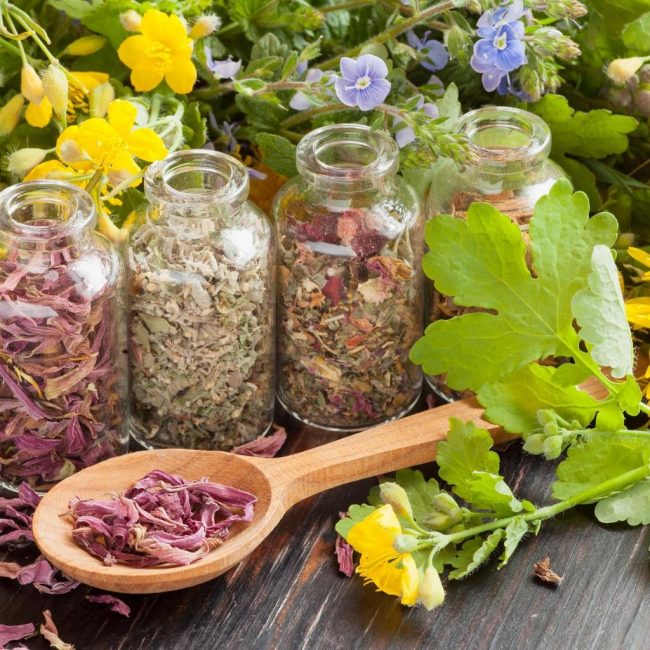
From the dried viola, you can prepare an infusion
... It is used to rinse the throat and mouth, as a bath and lotion.
For cooking you will need:
- 1 tablespoon dry raw materials
- 200 gr. boiling water
Preparation:
Pour boiling water over the pansies and leave for 15 minutes in a warm place. You can use a thermos or a water bath. Then strain, cool and apply.
Cough syrup recipe:
- Water - 1 l
- Sugar - 125 gr
- Lemon - 1 piece
- Dried pansies - 1 tbsp. spoon
Preparation:
Boil water and pour dry grass over it. Insist during the night. Then add sugar and cook the syrup until thick. A few minutes until ready, squeeze the juice from the lemon and add to the syrup. Take 1 - 2 times a day for a tablespoon.
Pansies are not harmful to health when consumed in moderation. Their flowers are used in cooking to decorate dishes and pastries.
How to grow a plant
Pansies: 10 types, a description of the process of growing from seeds in the open field and seedlings at home, the use of flowers (60+ Photos & Videos) + Reviews
7.8
Total Score
Conclusion
Ease of care
7
Appearance
8
Bloom
7.5
Smell
8
Originality
8.5
|
Diseases and pests
Unpretentious flowers, but with improper care they can very easily get sick, however, diseases can be avoided simply by observing agricultural techniques.
Black leg - not only seedlings are sick, but also adult plants, with thickening, when weeds are not removed in time. When there is a constant stagnation of water. Sick plants must be removed, watering must be stopped for the first time, and the soil must be tamed with wood ash.
Gray rot is also caused by improper care. As soon as signs appeared, we begin to spray the plants with a solution of copper oxychloride for a month, after a week. the same measures help against brown spot, which can cause the death of the plant.
Among pests, spider mites and aphids are especially common on flowers.It is easy to get rid of them with the help of fungicide treatment, sprinkle the plants with ash or spray with soapy water.
Here, too, it is important to take action on time, otherwise you may not wait for flowering at all.


